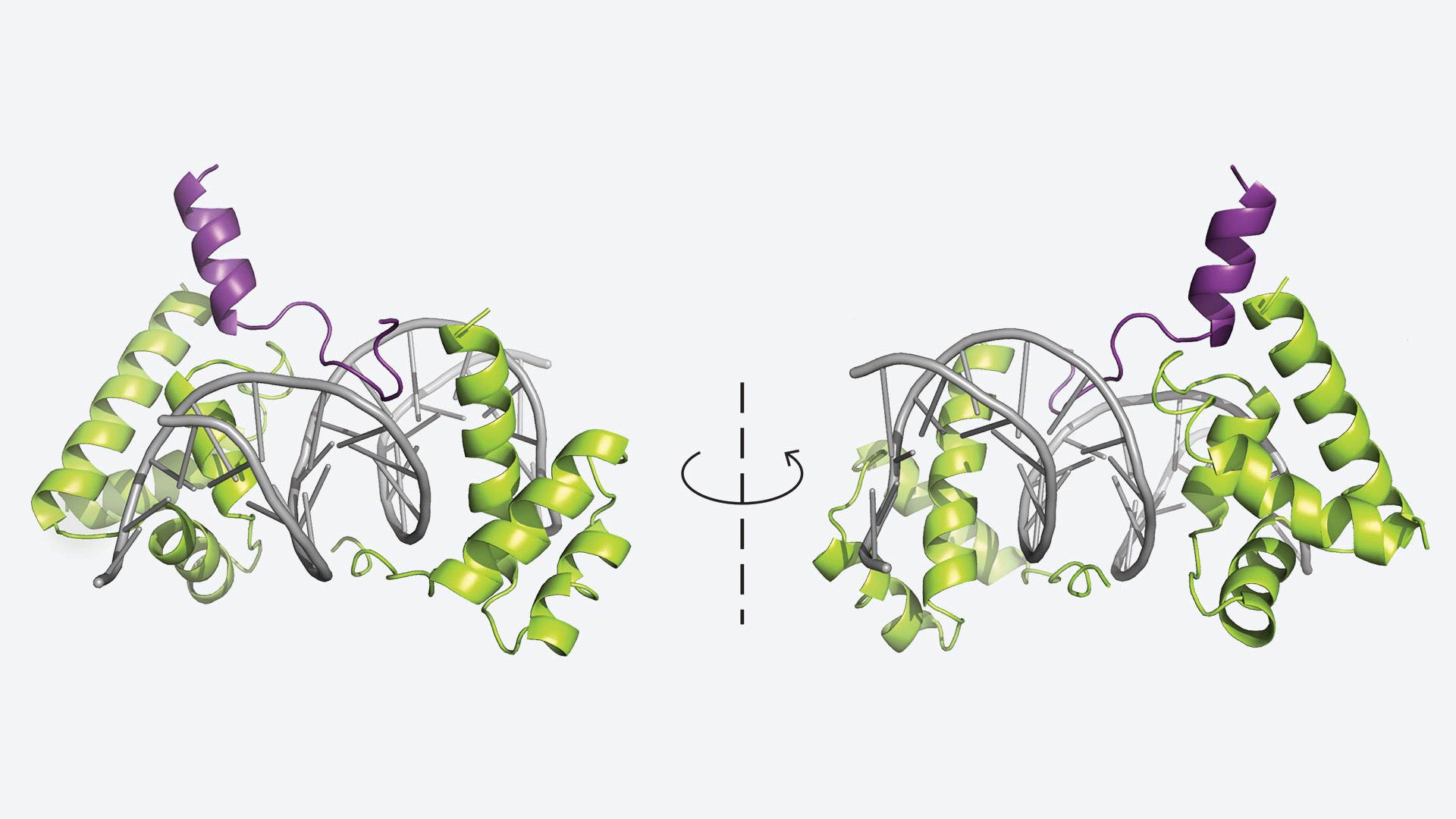Some tumors are almost impossible to treat. That’s especially true for carcinomas, which don’t behave like other malignancies. Some of these tumors act as shapeshifters and start to resemble cells from other organs of the human body, such as skin. This bizarre behavior presents a challenge for existing therapies. “The tumors are notoriously plastic in their cellular identity,” says Cold Spring Harbor Laboratory (CSHL) Professor Christopher Vakoc. Some may even change to escape cancer treatment.
Recent studies from the Vakoc lab shine a new light on two hard-to-treat carcinomas, revealing vulnerabilities that could “tee up targets for therapy,” he says.
In a study published in Nature Communications, CSHL researchers identify a protein that determines whether pancreatic cancer cells maintain their classical form or begin to look and act more like skin cells. Meanwhile, in Cell Reports, they uncover the crystal structure of another group of proteins that plays a key role in tuft cell lung cancer.
This latest finding represents a full-circle moment for the lab, Vakoc explains. When he and his colleagues discovered tuft cell lung cancer in 2018, they were searching for epigenetic factors that drive tumor growth. In other words, they were looking beyond the genes themselves and into the processes of transcription and gene regulation. Now, in collaboration with CSHL Director of Research Leemor Joshua-Tor, they’ve found what could someday become an epigenetic therapy designed to stop the cancer’s growth.
CSHL Professor Chris Vakoc discusses cancer cells’ shifting identities and his lab’s search for the regulators of these transformations.
Together, the two new studies continue to build on one of Vakoc’s main goals of the last 17 years. “We aim to identify the master regulators of cellular identity,” he says. The hope is that these “master regulators” could someday become the targets of new medicines, much like hormone therapies now used against breast and prostate cancers that were once difficult to treat. Of course, there’s still a long way to go.
Should the findings eventually lead to new drugs, Vakoc hopes they will be engineered to target the cancer without harming other parts of the patient’s body. That ethos is apparent in both of his lab’s latest studies. Whether going after mouse models of pancreatic cancer or lung cancer, they see no evidence of toxicity or damage to vital organs. “We’re setting a higher bar for specificity when it comes to new cancer targets and treatments,” Vakoc says.
They’re not just working toward new medicines. They’re coming to a deeper understanding of cellular identity, and in so doing, they’re helping establish a new and better standard of care.
Written by: Jen A. Miller | publicaffairs@cshl.edu | 516-367-8455
Funding
National Cancer Institute, Pershing Square Sohn Cancer Research Alliance, CSHL-Northwell Health Affiliation, Treeline Biosciences, National Institutes of Health, U.S. Department of Defense, Howard Hughes Medical Institute
Citation
Cunniff, P.J., et al., “KLF5 drives dichotomous lineage programs in pancreatic cancer via AAA+ ATPase coactivators”, Nature Communications, November 15, 2025. DOI: 10.1038/s41467-025-66007-0
Alpsoy, A., et al., “Structural Basis of DNA-Dependent Coactivator Recruitment by the Tuft Cell Master Regulator POU2F3”, Cell Reports, November 18, 2025. DOI: 10.1016/j.celrep.2025.116572
Core Facilites
Principal Investigator

Chris Vakoc
Professor
Alan and Edith Seligson Professor of Cancer Research
Cancer Center Deputy Director of Research
M.D., Ph.D., University of Pennsylvania, 2007
